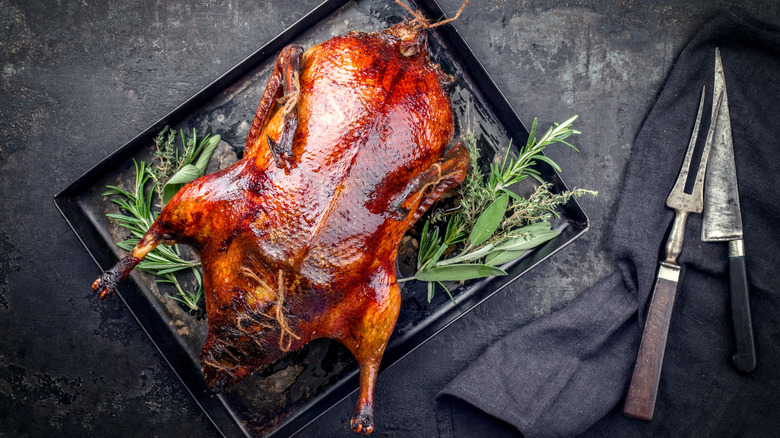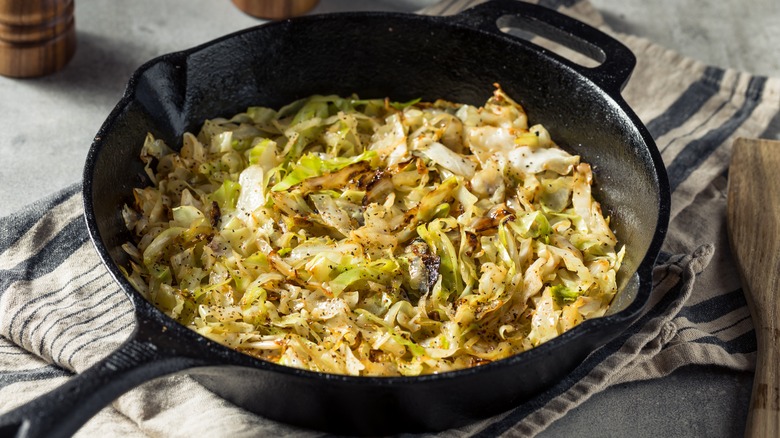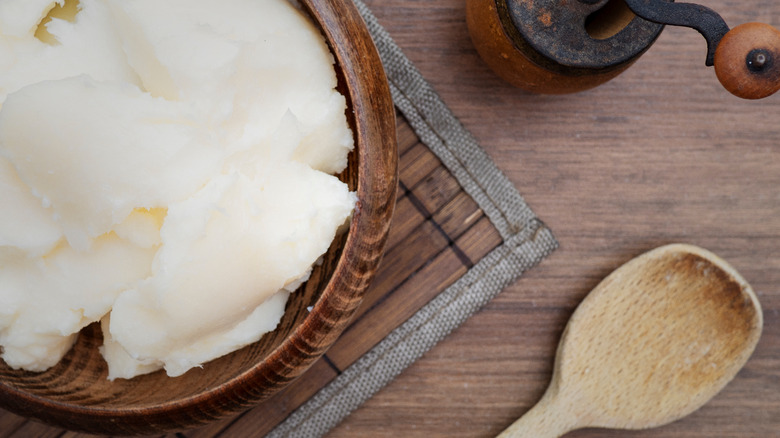Duck Butter Is The Perfect Way To Repurpose Duck Fat
Some people might associate the term "duck butter" with the 2018 independent film starring Alia Shawkat, with has nothing to do with home cooking or ducks. Home improvement types know it as a lubricant for pipe joints with rubber or plastic gaskets. Most people, however, understand it as a richly flavored byproduct of waterfowl.
If you're into the idea of cooking duck at home, rendering the fat from its skin is a great way to get the absolute most out of the bird, as it is with chicken, pork, and any other kind of fatty meat. Best of all, making duck butter is a relatively quick and straightforward process. It's almost too simple when you consider all the dishes you can make with it. Wildfowl Magazine, which calls it "The bacon of waterfowl" and "Gourmet-Gucci-grocery-store-level stuff," explains how to get from point A (duck skin) to B (exceptionally delicious, multi-purpose duck butter). Before we dive into the cooking process, let's dive into why you should make duck butter in the first place.
How to cook with duck butter
Everything tastes better cooked in fat; it's the secret behind decadent French pastries, restaurant-quality scrambled eggs, and countless other dishes. When you're blessed with a jar of homemade rendered duck fat in the fridge — fat that's been slowly cooked until its moisture is evaporated and resembles a creamy white paste — you can and should use it in as many applications as possible. It will add even more flavor to dishes that play well with butter, lard, and olive oil.
Vegetables and duck fat make a particularly fabulous pair. If we had to choose one vegetable to sauté in duck butter, it would be cabbage, which transforms into a silky, deeply savory side when sliced thin, simmered in fat, and seasoned with salt and pepper. Given a second choice, we'd reach for small potatoes. Toss them with duck butter, salt, pepper, and your favorite woody herbs, and roast them on a sheet tray for 45 minutes at 450 F. You won't regret it.
Are you getting hungry? Here's how to make duck fat at home.
Cut, simmer, strain, and enjoy
It's not every day that a whole roasted duck hits the dinner table. To extend that special occasion, sacrifice the duck skin before cooking the bird to keep enjoying its deep flavor in the form of rendered fat for weeks to come.
Cut the skin and fat from the bird and chop it into approximately one-inch-by-one-inch pieces. Add the scraps to a heavy-bottomed pot with ½ cup of water over medium-high heat until it comes to a boil, at which point you can bring it down to a simmer. When the water has evaporated, the skin is crisp, and the fat has liquified in the pot (which will take up to an hour), all that's left to do is strain the mixture into a bowl, decant it into a heat-safe container, and enjoy. Store it in the fridge for up to six months, or clear out some freezer space and let it chill for up to three years.


